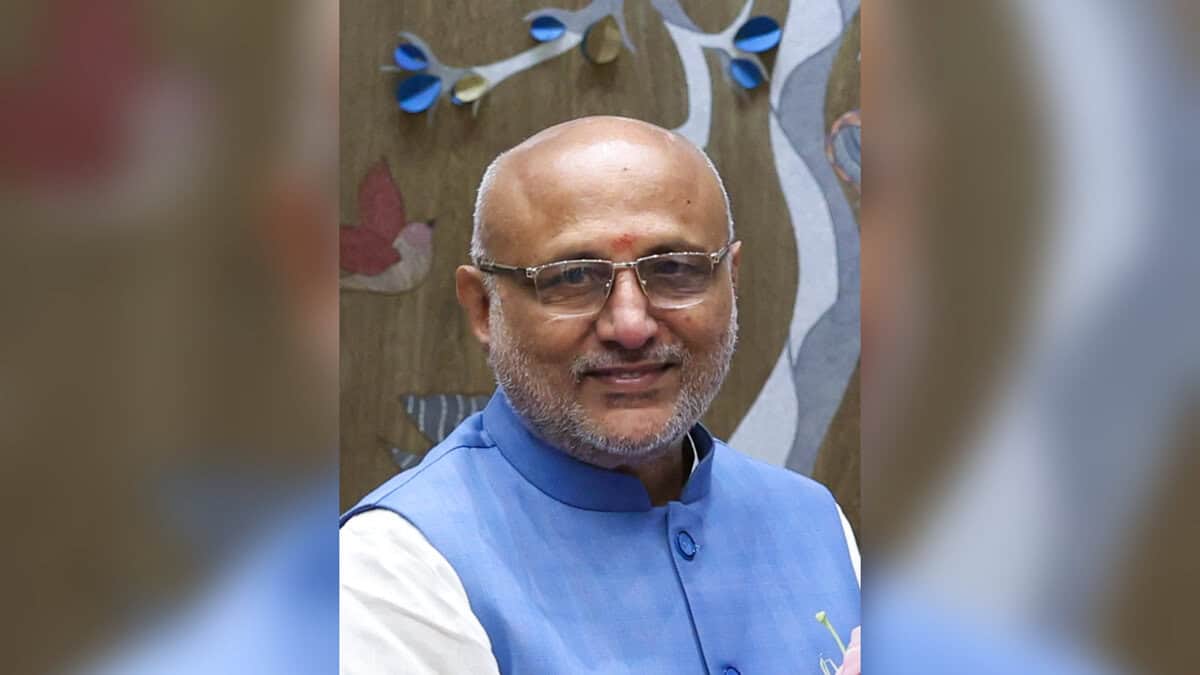
The Bharatiya Janata Party’s move to field C P Radhakrishnan as the Vice-Presidential candidate to improve its performance in the Assembly election in Tamil Nadu next year amounts to banging one’s head against the wall. In the last quarter-century, the saffron party has made several efforts to make inroads into this Dravidian bastion, but each time it has failed disastrously.
The irony is that the BJP under Prime Minister Narendra Modi has hardly learnt anything from these repeated failures in the past. That Radhakrishnan is going to win cannot be doubted, but nursing the dream that this step will achieve something significant in the 2026 Assembly elections means expecting too much. Keeping in mind the 2024 parliamentary election, the saffron party had installed Sengol with full religious fervor on the occasion of the inaugural ceremony of the new Parliament building in May 2023. But a year later, the BJP failed to open its account in the Lok Sabha poll held in Tamil Nadu on April 19, though it fielded its candidate in 19 out of 39 seats. It could not even win Coimbatore, which was won twice by Radhakrishnan in 1998 and 1999. The party put up its high-profile the, then state chief K Annamalai, a former IPS officer, from here, but he too lost.
This was the outcome when Modi spent more than 15 days in Tamil Nadu in the first three and a half months of 2024. In January alone, he undertook a sort of 11-day-long pilgrimage to Tamil Nadu and Kerala before the consecration of the Ram temple in Ayodhya on January 22.
After the announcement of the election date in mid-March, he paid maximum attention to Tamil Nadu, where he held several roadshows, besides addressing public meetings.
Past examples
It needs to be mentioned that a resurgent BJP went with the DMK (which was in power then) in the post-Kargil War 1999 Lok Sabha poll. But when Jayalalithaa-led AIADMK won the 2001 Assembly election, the Sangh Parivar started cozying up with the new chief minister. This U-turn was taken even when in April 1999 Jayalalithaa ditched the BJP (though in the 1998 Lok Sabha poll AIADMK and BJP contested jointly) and her party’s 18 MPs voted against the then Atal Bihari Vajpayee government, which lost power during a trust vote by just one vote. The DMK supremo Karunanidhi was left with no option but to go with the Congress in the 2004 Lok Sabha election. It needs to be mentioned that the DMK was the bitterest critic of the Grand Old Party during the heydays of civil war in Sri Lanka. Yet the Congress-DMK-led combination won 35 out of 39 Lok Sabha seats while the AIADMK-BJP combine drew a blank. In 2004 no political commentator had ever predicted that this would be the outcome. This tactical blunder in Tamil Nadu, combined with the good performance of Rashtriya Janata Dal and Samajwadi Party in Bihar and Uttar Pradesh, respectively, played an important role in the unexpected defeat of the Atal Bihari Vajpayee-led National Democratic Alliance in May 2004.
In 2019, the Congress-DMK-led alliance once again swept the polls in Tamil Nadu, winning 38 out of 39 seats. The Pulwama terrorist attack and subsequent Balakot strike did not work at all here. This was in total contrast to the 2014 performance of the United Progressive Alliance when it failed to open its account. The AIADMK, which fought alone, won 37 seats then. The Modi magic did not work there as the BJP contested in alliance with smaller Tamil parties.
BJP is in a dilemma
Caught on the wrong foot after the abrupt resignation of Jagdeep Dhankhar from the post of the Vice President, the confused and divided BJP leadership decided to put up the Maharashtra governor, C P Radhakrishnan. As usual, the shouting brigade in the media started hailing it as a master stroke and linked the move to the next year’s Tamil Nadu election, though the fact is that division within the Sangh Parivar led to the nomination of Radhakrishnan.
By that logic, the saffron party should have nominated the governor of West Bengal or Kerala, where too election is due in April next year. In West Bengal, the BJP, which won 77 seats in 2021, has a much better fighting chance than Tamil Nadu, where it bagged just four seats in the same year.
Actually, the nomination of West Bengal governor C V Ananda Bose would have served two purposes. This Kerala-born retired IAS officer is originally a Malayali, but his father was inspired by Netaji Subhash Chandra Bose; therefore, he adopted Bose as a surname for all his seven children. Mind it, Kerala, where the BJP won the first ever Lok Sabha seat in 2024, goes to poll along with West Bengal, Tamil Nadu, Assam, and Puducherry. But the problem with Bose is that last year, a woman contractual employee of Raj Bhawan, filed a molestation case against him. Under Article 361 of the Indian Constitution, only the President and the Governor enjoy criminal immunity.
No doubt, the BJP is at its weakest in Tamil Nadu, and Radhakrishnan’s victory is not going to make any change. So, the BJP’s decision to make him its candidate actually exposes the crack within. By making an RSS man as the candidate, Modi wants to appease the top brass of the Sangh. It is another thing that the apologists for the saffron party are working overtime to see a great strategic move in it.
But if the BJP top echelon is really serious in reviving the party in Tamil Nadu, it should have made committed RSS man Radhakrishnan the national president of the party, as J P Nadda, who is also a Union minister, has been serving this post as caretaker since January 2023, when his three-year term had expired. The post of Vice President can never be used to expand the political influence of the ruling party.



